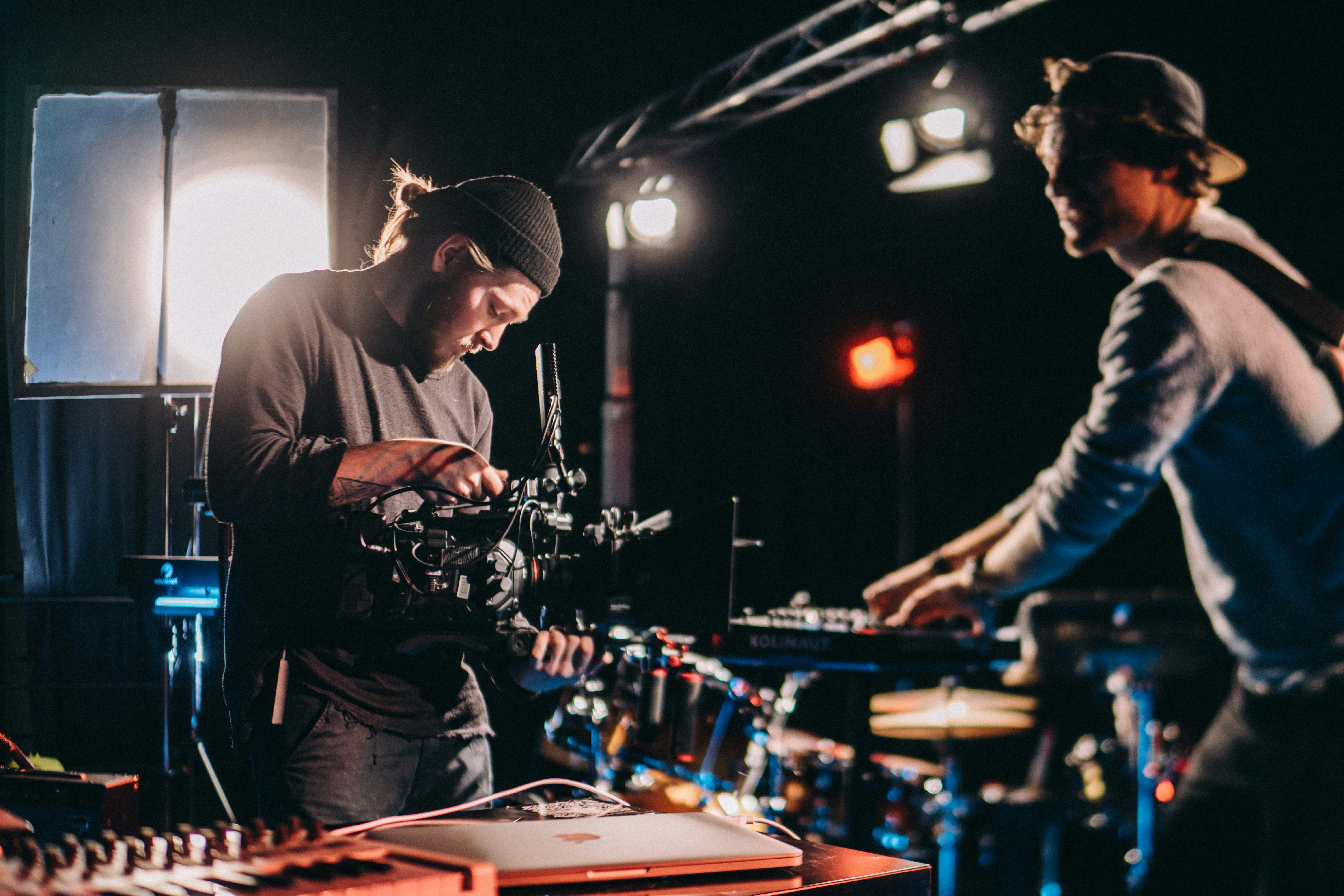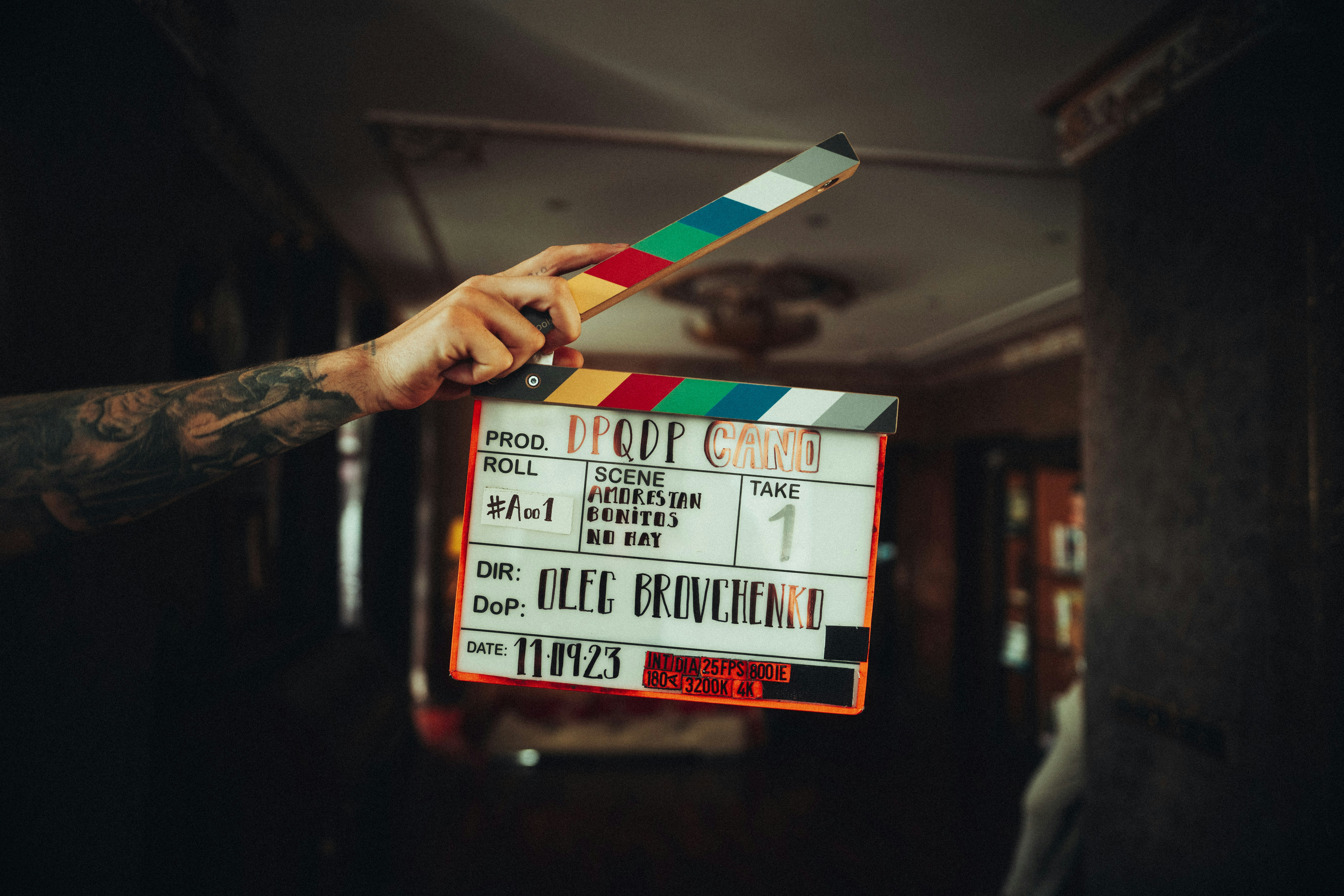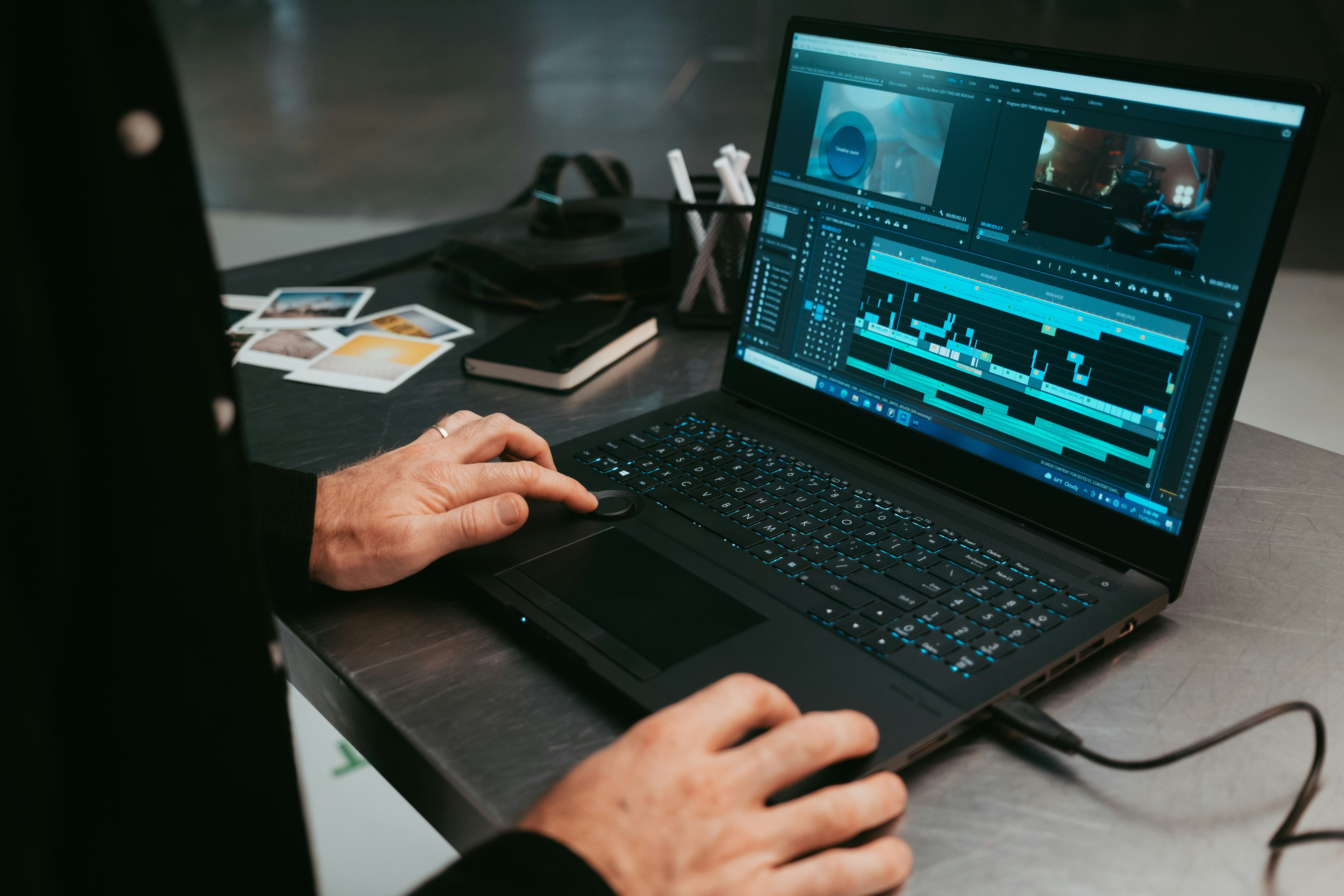The AI Filmmaking Revolution: How 2025 Changed Production Forever

Share this post:
The AI Filmmaking Revolution: How 2025 Changed Production Forever
The film industry reached an inflection point in 2025. What began as experimental adoption of AI tools transformed into standard practice across production pipelines worldwide. Studios report cost reductions of 20-30%, post-production timelines have compressed from months to weeks, and independent filmmakers access capabilities previously reserved for major productions.
This transformation isn't replacing human creativity. Instead, AI handles technical execution while filmmakers focus on storytelling, vision, and artistic choices. The hybrid workflow model combining human creativity with algorithmic precision is redefining what's possible at every budget level.

The Economics of AI Production
Production budgets are undergoing fundamental restructuring as AI tools automate time intensive processes. Indian studios project 20-30% cost reductions by 2026, and similar patterns emerge globally as productions integrate AI across departments.
Post-production represents the most immediate transformation. Tasks that consumed weeks now complete in days. Warner Bros. Discovery cut captioning time and costs significantly through AI automation. Netflix deployed generative AI for the first time in production content with "El Eternauta," demonstrating major platform confidence in the technology.
The cost savings cascade through production phases. Pre-production planning accelerates with AI assisted storyboarding and previsualization. Principal photography requires fewer takes when AI tools provide realtime feedback on technical aspects. Post-production compresses dramatically as AI handles color grading, sound design, and visual effects foundation work.
These economic shifts matter most for independent creators. A filmmaker working with a $50,000 budget who reduces costs by 25% gains $12,500 for additional creative resources or extends production capability by that amount. At scale, these savings compound into access previously unavailable to independent voices.
The democratization extends beyond cost reduction. Tools that required specialized expertise now offer accessible interfaces. Color grading that demanded years of training becomes approachable through AI assistance. Visual effects that required expensive software and technical knowledge now generate through natural language descriptions.
Hybrid Workflows Emerge as Standard
The productive middle ground combines human creative vision with AI execution capability. This hybrid approach preserves what humans do best while leveraging AI for technical precision and speed.
During development, writers use AI tools to explore story variations, test dialogue options, and identify potential narrative issues. The writer maintains creative control but gains an intelligent collaborator for exploring possibilities. Script coverage that once required days from readers now provides instant analysis, though human judgment remains essential for evaluating creative merit.
Pre-production planning accelerates through AI assisted visualization. Directors describe shot compositions in natural language and see immediate visual representations. Location scouting benefits from AI generated environment options. Storyboarding evolves from static sketches to animated sequences showing camera movement and timing.
Principal photography integrates realtime AI assistance without disrupting creative flow. Directors review takes with instant analysis of technical quality, allowing immediate decisions about coverage needs. Camera operators receive suggestions for composition refinement while maintaining artistic authority over final choices.
Post-production sees the deepest integration. Editors work with AI tools that suggest cut points, identify best takes, and maintain continuity across sequences. Colorists use AI for initial grading passes then add creative refinement. Sound designers leverage AI for dialogue cleanup and ambient generation while focusing creative time on signature moments.
The hybrid model succeeds because it positions AI as augmentation rather than replacement. Filmmakers retain creative control while AI handles technical execution, dramatically expanding what's achievable within time and budget constraints.

Post-Production Transformation
Post-production workflows experienced the most dramatic restructuring through AI integration. Processes that defined industry timelines for decades compressed or automated entirely.
Editing timelines shortened significantly. AI tools analyze footage to identify best takes based on technical quality, performance consistency, and shot composition. Editors review AI suggestions rather than manually screening every frame. This doesn't replace editorial judgment but eliminates tedious technical review.
Color grading evolved from entirely manual process to hybrid workflow. AI establishes baseline color correction, matches shots for consistency, and applies initial stylistic treatments. Colorists then focus on creative refinement and signature looks rather than technical correction. The combination maintains artistic control while dramatically reducing time requirements.
Sound design benefits from AI generated ambient environments, dialogue cleanup, and noise reduction. Sound designers describe desired atmospheres in natural language and receive appropriate audio beds. Manual sound design work focuses on key moments and creative signatures while AI handles foundational elements.
Visual effects pipelines integrate AI at multiple stages. Rotoscoping and masking that consumed weeks of artist time now automate with AI assistance requiring only review and refinement. Background removal, object tracking, and basic compositing happen algorithmically. VFX artists focus creative time on hero shots and complex simulations.
Subtitling and localization accelerated through AI translation and timing. Warner Bros. Discovery's implementation demonstrates how AI handles initial passes while human reviewers ensure accuracy and cultural appropriateness. Content reaches international audiences faster while maintaining quality standards.
The cumulative effect compresses post-production from months to weeks for comparable output quality. This timeline reduction enables faster project turnaround, more efficient capital use, and increased production volume without proportional cost increases.
Independent Filmmaker Empowerment
The democratization of filmmaking tools through AI accessibility represents perhaps the most significant shift. Capabilities requiring studio resources and specialized expertise now become available to independent creators.
Visual effects that once demanded expensive software subscriptions and years of training now generate through text descriptions. An independent filmmaker can add convincing environmental effects, simple CGI elements, or polished composites without hiring specialized artists or learning complex software.
Color grading tools with AI assistance bring professional polish to indie productions. What previously required expensive colorists and dedicated grading suites now happens on modest computer systems with AI tools providing intelligent suggestions and automated consistency.
Sound design gains similar accessibility. AI generated ambient environments, dialogue enhancement, and basic sound effects creation mean independent filmmakers achieve professional audio quality without extensive sound libraries or specialized expertise.
Music composition through AI assistance allows filmmakers to create custom scores matching their exact creative vision. While many still prefer working with human composers for signature musical moments, AI generated music serves supplemental needs without licensing complications or additional budget.
The production planning stage benefits from AI assisted storyboarding and previsualization. Independent filmmakers visualize complex sequences, experiment with shot compositions, and plan coverage without expensive previs services.
This democratization doesn't guarantee quality but removes technical barriers. Independent filmmakers can focus on storytelling, performance, and creative vision rather than being limited by technical execution challenges. The playing field levels as access to professional grade tools spreads beyond studio environments.

Regional Production Growth
AI integration catalyzes production growth in regions previously constrained by cost structures or talent availability. India's emergence as "a studio for the world" exemplifies how AI enables regional production centers to compete globally.
Indian studios leverage AI to offer competitive production services internationally. The cost advantages of regional production combine with AI enabled quality standards matching developed markets. This positions India and similar markets as attractive production destinations for international content.
Content localization accelerates through AI translation and dubbing. Regional productions reach global audiences more easily while international content adapts for local markets faster and cheaper. This bidirectional flow increases content diversity and market opportunities for filmmakers worldwide.
The talent barrier lowers as AI tools compensate for regional skill gaps. Areas with strong creative talent but limited technical expertise can produce at higher quality levels. The reverse also applies: technical centers can tackle more ambitious creative projects with AI assistance.
This regional growth creates employment opportunities in emerging markets while reducing production concentration in traditional hubs. Filmmakers in Nigeria, South America, Southeast Asia, and Eastern Europe access tools enabling competitive production quality.
The result distributes filmmaking capability more evenly globally. Stories from diverse cultural perspectives reach audiences with production quality meeting international standards. This enriches global cinema while creating economic opportunities in developing markets.
Platform Integration and Distribution
Streaming platforms drive AI adoption through both production support and distribution optimization. Major platforms integrate AI throughout their operations, from content creation through audience engagement.
Netflix's use of generative AI in "El Eternauta" production signals platform confidence in AI content creation. This breakthrough validates AI tools for mainstream production and encourages broader industry adoption. Other platforms follow with their own AI integration strategies.
Content recommendation algorithms grow more sophisticated through AI advancement. Platforms better match content with appropriate audiences, improving discovery for independent filmmakers. AI driven marketing optimization helps smaller productions reach target viewers more effectively.
Platform provided production tools increasingly include AI assistance. Streamlined workflows from concept through delivery reduce barriers for content creators. This vertical integration benefits platforms through content volume increases while supporting creator success.
The distribution advantages particularly benefit independent filmmakers who lack traditional marketing infrastructure. AI driven audience targeting and content optimization level the discovery playing field between studio productions and independent work.
Technical Infrastructure Development
The AI filmmaking revolution requires supporting infrastructure evolving rapidly to meet production needs. Cloud based processing, specialized hardware, and integrated software ecosystems enable practical AI deployment.
Cloud rendering services make AI processing accessible without significant capital investment. Filmmakers access powerful GPU resources on demand rather than purchasing expensive hardware. This consumption based model suits independent creators with variable workload patterns.
Specialized AI hardware accelerates adoption as processing requirements decrease. Mid range consumer GPUs now handle tasks requiring data center resources a year ago. This hardware evolution makes AI tools practical for laptop based workflows.
Software integration reduces friction between tools. AI capabilities embed directly into established editing, color grading, and visual effects software. Filmmakers use familiar interfaces enhanced with AI rather than learning entirely new tools.
Training resources and educational content proliferate as institutions adapt curricula for AI integrated workflows. Film schools teach hybrid approaches combining traditional craft with AI tool proficiency. This educational foundation prepares emerging filmmakers for contemporary production realities.

Quality and Artistic Considerations
The rapid AI adoption raises legitimate questions about quality standards and artistic integrity. The industry navigates these concerns while embracing productivity benefits.
Quality control remains essential as AI generated content enters production pipelines. Studios implement review processes ensuring AI output meets standards. The hybrid workflow model naturally addresses this through human oversight at every stage.
Artistic authenticity concerns surface around AI generated content. Filmmakers grapple with questions about creative authorship when AI contributes significantly to final output. The emerging consensus treats AI as tool rather than collaborator, with creative responsibility remaining with human filmmakers.
Audience perception evolves as AI assisted content becomes normalized. Initial skepticism gives way to evaluation based on final quality rather than production methods. Audiences care about story, emotion, and entertainment value regardless of technical creation process.
The craft question persists around whether AI assistance diminishes filmmaking as art form. Proponents argue AI elevates craft by removing technical barriers to creative expression. Critics worry about homogenization and loss of distinctive human touch. The reality likely involves both outcomes across different contexts.
Industry standards develop around AI disclosure and attribution. Transparency about AI use allows audiences to make informed judgments while preventing deceptive practices. These standards balance honesty with avoiding stigma around AI assistance.
Economic Impact on Industry Employment
AI integration affects industry employment patterns, creating both displacement concerns and new opportunities. The transition period brings challenges requiring thoughtful management.
Traditional roles evolve rather than disappear entirely. Colorists become color supervisors overseeing AI systems. Editors focus on creative decisions while AI handles technical execution. Visual effects artists shift toward complex hero shots from repetitive tasks.
New roles emerge around AI tool operation, training, and quality control. Technical directors specializing in AI pipeline integration become valuable. Prompt engineers who effectively communicate creative vision to AI systems develop as new specialty.
The employment equation balances job transformation against production volume increases. If AI enables 50% more projects at 30% lower cost, the industry can expand while employing similar or greater numbers of people in different roles.
Independent filmmakers gain employment opportunities as barriers lower. More creators can produce professionally, expanding the industry's creative base. This democratization creates opportunities that didn't exist under higher barrier conditions.
The transition challenges particularly affect mid career professionals whose skills face obsolescence. Industry training programs and education systems must adapt to support workforce transition.
Looking Forward: The Next Evolution
The 2025 transformation represents beginning rather than culmination of AI's film industry impact. Several trends point toward continuing evolution.
AI capabilities will continue improving across all production phases. Today's impressive tools will seem limited as next generation systems handle increased complexity. The pace of capability advancement shows no signs of slowing.
Integration will deepen as tools mature and workflows optimize. The current hybrid model will refine through experience and technological improvement. Best practices will emerge from trial across thousands of productions.
Accessibility will expand as computational requirements decrease and tools simplify. What requires specialized knowledge today becomes intuitive tomorrow. This continued democratization will further level the filmmaking landscape.
New creative possibilities will emerge from AI capabilities that don't exist yet. Today's tools seem revolutionary but represent early implementations. Future capabilities may enable entirely new storytelling approaches.
The industry structure itself may shift as production barriers lower. The studio system evolved around capital requirements and technical expertise. If those barriers largely disappear, industry organization could restructure around different principles.
Practical Guidance for Filmmakers
Filmmakers can position themselves effectively for the AI integrated future through several strategic approaches.
Embrace AI tools while maintaining creative control. Experiment with available technologies to understand their capabilities and limitations. Integration works best when filmmakers comprehend both what AI can do and what it cannot.
Develop hybrid workflow skills combining traditional craft with AI proficiency. The most valuable creators understand both domains and know when to apply each approach. This versatility provides competitive advantage.
Focus creative energy on elements where human judgment matters most: story, performance, emotional beats, and artistic vision. Let AI handle technical execution where appropriate. This division of labor maximizes output quality and efficiency.
Stay informed about emerging tools and capabilities. The technology evolves rapidly, with new possibilities appearing regularly. Awareness of available tools enables strategic adoption decisions.
Build networks with other AI adopting filmmakers. Share experiences, best practices, and lessons learned. The community knowledge base grows faster through collaboration than individual experimentation.
Maintain quality standards while experimenting with AI assistance. The goal remains excellent filmmaking, with AI serving that objective rather than becoming the objective itself.
Conclusion
The 2025 AI filmmaking revolution fundamentally restructured production economics, democratized access to professional tools, and accelerated timelines across the industry. The 20-30% cost reductions enable more ambitious projects at existing budgets or make filmmaking accessible to creators previously excluded by financial barriers.
The hybrid workflow model combining human creativity with AI execution proves most effective. Filmmakers maintain artistic control while AI handles technical implementation, dramatically expanding what's achievable within time and budget constraints.
Independent creators are the primary beneficiaries as professional capabilities become accessible. Visual effects, color grading, sound design, and other specialties that once required expensive expertise now integrate through AI assistance. This democratization promises increased diversity in stories and perspectives reaching audiences.
The transformation continues rather than concluding. AI capabilities will advance, integration will deepen, and new possibilities will emerge. Filmmakers who embrace these tools while maintaining creative vision position themselves to thrive in the evolving landscape.
The fundamental nature of filmmaking endures: telling compelling stories that resonate with audiences. AI changes execution methods but not the core creative challenge. The best filmmakers will be those who leverage new tools effectively while staying focused on the timeless goal of moving audiences through powerful storytelling.
Explore how AI tools can enhance your creative workflow at our AI Video Generator, and stay informed about the continuing evolution of AI assisted filmmaking that's reshaping production possibilities worldwide.
Resources:
- Morgan Stanley: AI in Media & Entertainment Analysis
- EY India: Media & Entertainment Outlook Reports
- PwC India: Entertainment & Media Outlook 2024-28
- Broadcast & Film: Industry Analysis and Trends
- Industry Studies: AI Adoption and Cost Impact Research



